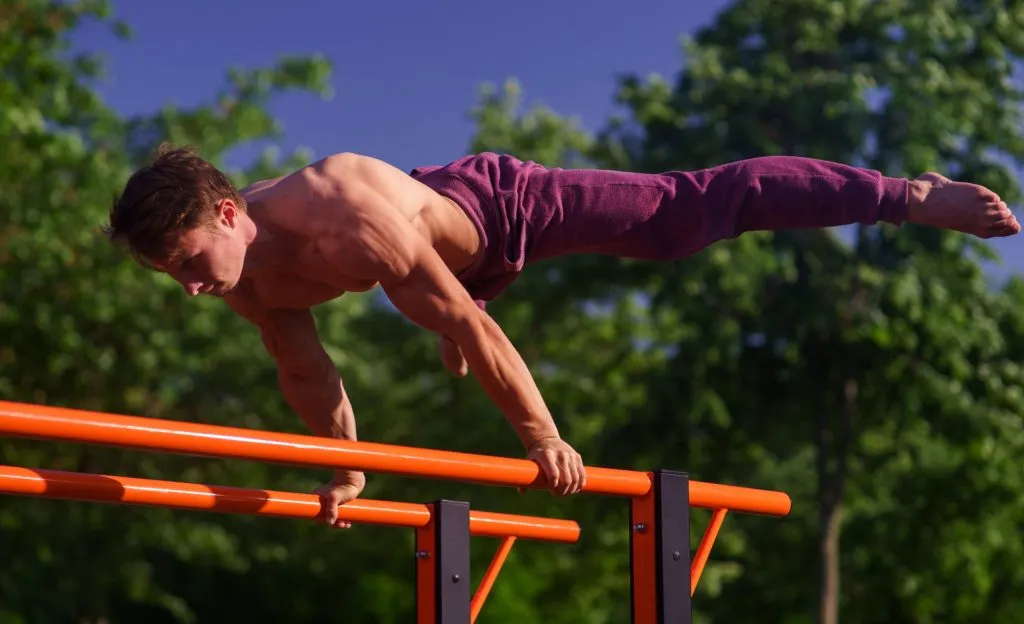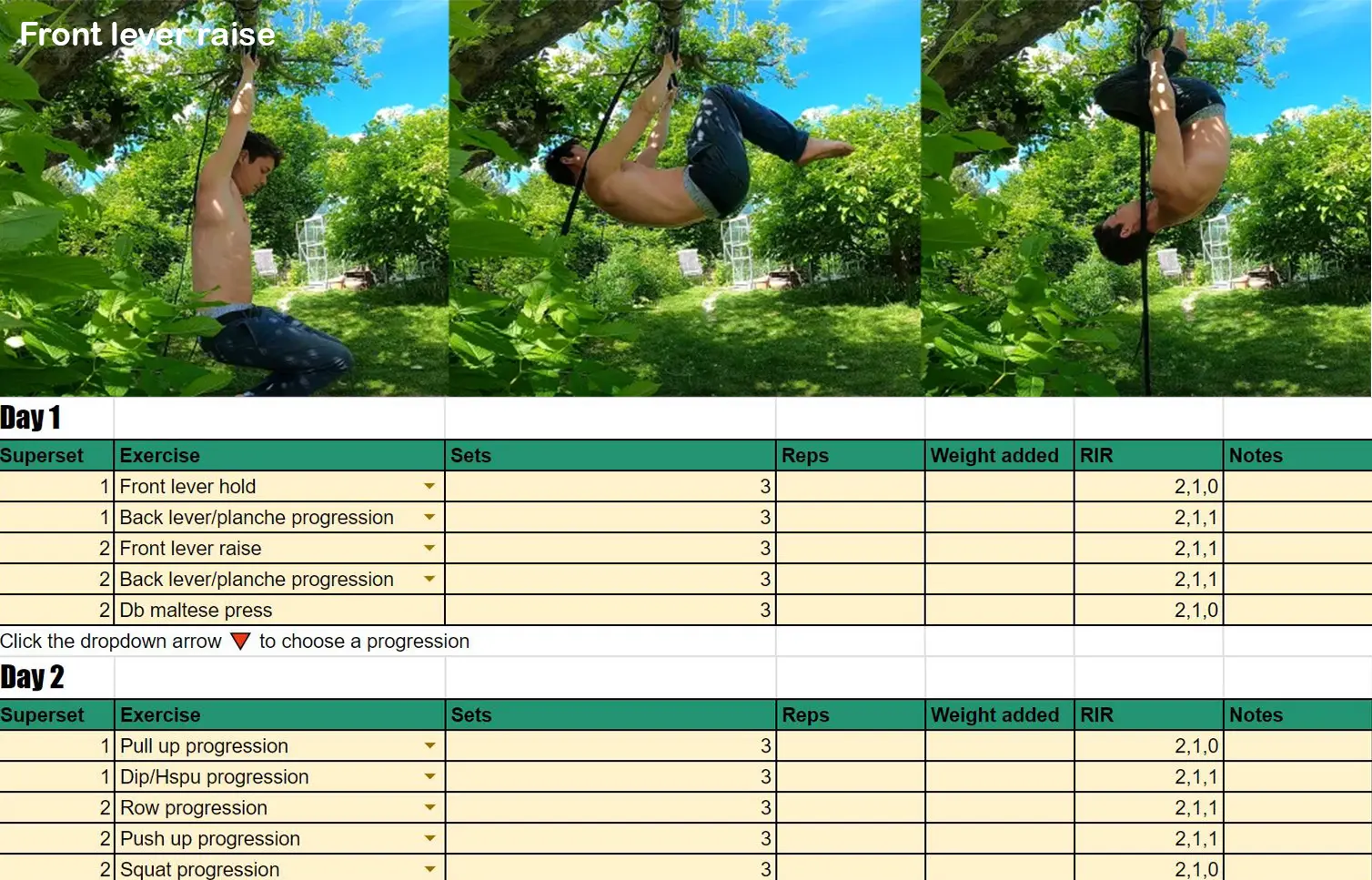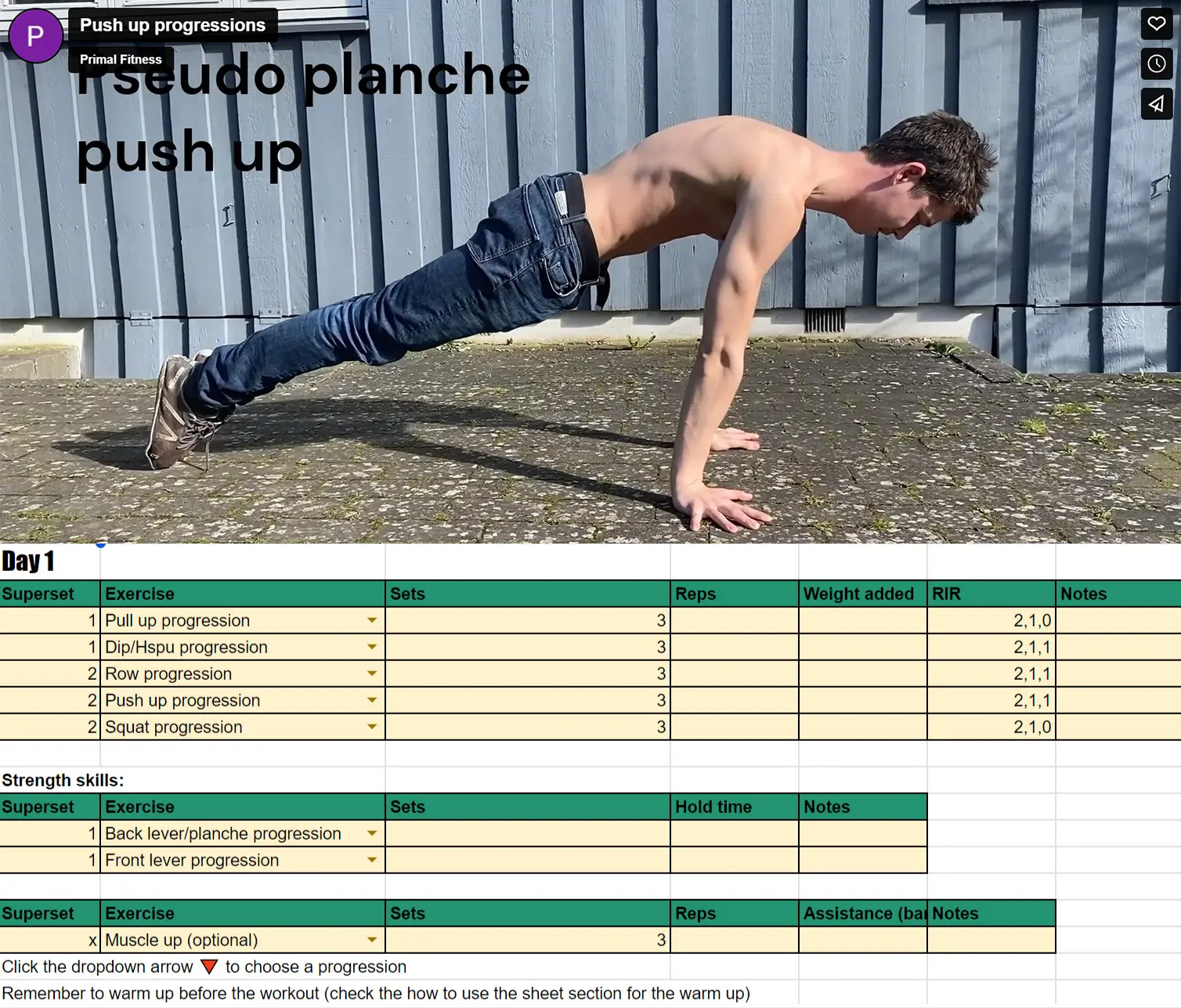Are you interested in learning advanced calisthenics skills like the front lever and planche, while still getting better at bent-arm movements like pull-ups and dips? Developing a strong, well-sculpted physique at the same time. The straight arm/bent arm split might be the perfect split for you. Read on to find out more!

Table of Contents
What is the straight arm/bent arm split?
The straight arm/bent arm split is a specialized training approach in calisthenics where workouts are divided into sessions that focus either on straight arm movements or bent arm movements. In this split, straight arm movements involve exercises where the arms remain extended, such as planche progressions and front lever progressions. On the other hand, bent arm movements consist of exercises where the arms flex at the elbows, like pull-ups, push-ups, and dips.
Pros/Cons of the Bent Arm/Straight Arm Split
While there are a few pros and cons to this training split, in general, it is effective for achieving certain upper body strength and skill goals; however, it is not recommended to those who are simply interested in hypertrophy and do not care about skills. I’ve listed some of the benefits and drawbacks of this training split so you can decide whether it’s right for you. Here’s an overview of the pros and cons:
Pros:
- Skill Mastery: Focusing on specific movement categories on separate days can lead to quicker skill mastery as you can dedicate more focused practice time.
- Variety: The split provides variety in your training routine, keeping workouts engaging and mentally stimulating.
- Balanced Development: The straight arm/bent arm split is beneficial if you want to progress with many of the isometric movements while also becoming stronger overall without skipping a lot of the bent arm strength exercises.
Cons:
- Fatigue Accumulation: If not properly managed, fatigue from one type of movement can carry over to the next session, affecting your performance and increasing the risk of injury.
- Injury: Focusing too much on one type of movement (e.g., straight arm) can lead to imbalances in muscle development and potential overuse injuries.
- Not beginner friendly: Beginners should begin with a well-structured, full-body split that focuses on fundamental strength exercises, proper technique, and gradual progression. You can then gradually introduce more advanced movements and potentially explore splits like the straight arm/bent arm split as your strength and skill develop.
Ultimately, the pros and cons of the Bent Arm/Straight Arm split depend on your goals, fitness level, preferences, and the specific exercises you include in your routine.
Straight Arm/Bent Arm Workout Structure
The following example illustrates how you might structure your training split using the straight arm and bent arm movement approach, while also incorporating lower body training on both days:
1. Bent Arm Day
- Warm-up + Handstand work
- Pull-up variation (choose appropriate variation)
- Push-up variation (choose appropriate variation)
- Horizontal row
- Dips
- Lower body: Squats, Lunges, Nordics, Glute bridge.
- Cool down: flexibility and mobility work
2. Straight Arm Day
- Warm-up + Handstand work
- Planche progression work (Dynamics and static holds)
- Front lever progression work (Dynamics and static holds)
- Lower body: Core and Calfs
- Cool down: flexibility and mobility work
Weekly Schedule:
Here’s an example of a weekly schedule that alternates between bent arm and straight arm movements, which you can use as a reference:
Mon: Bent Arm Strength
Tue: Rest + Active recovery
Wed: Straight Arm Strength
Thur: Rest + Active recovery
Fri: Bent Arm Strength
Sat: Rest + Active recovery
Sun: Straight Arm Strength
Try the program with video demonstrations and a spreadsheet for tracking progress for free 👇
What about the lower body?
In the straight arm/bent arm split, where you alternate between straight arm movements and bent arm movements on different days, the focus is primarily on upper body strength and control. While this split does not include dedicated Lower body days, it is important to note that lower body training is still recommended for a well-rounded fitness routine.
Here are a couple of options to incorporate leg training into the routine:
Include The lower body on the straight arm/bent arm days: Leg training is generally divided between the two days, for example, on one day you might focus on core and calf work. The other day, you could target the bigger leg muscles, such as the hamstrings and quadriceps.
Include a Lower body day: If you’re looking for more comprehensive leg training, you could consider dedicating a separate day to leg exercises. This would be in addition to your straight arm and bent arm days. On your leg day, you can work on various lower-body exercises, for the legs and core as well.
Skip legs: If your goals are centered around upper body strength or specific calisthenics skills, it might make more sense to exclude leg training, as the extra weights from your legs make upper body make strength skills harder, and leg training is also very taxing on the nervous system, taking energy away that could be spent working on skill-specific exercises. However, if you’re pursuing a balanced and functional fitness approach, including leg training is recommended.
Final thoughts
In conclusion, the straight arm/bent arm split is a training approach that can be highly effective for individuals with intermediate to advanced levels of calisthenics experience. It offers a structured way to work on isometric movements, such as planche and front lever progressions, while also becoming stronger overall without neglecting a lot of the bent arm strength exercises.
Related posts:
Free Calisthenics Programs💪
Anton has been training calisthenics for many years and has experience coaching calisthenics. As a calisthenics nerd, I enjoy diving deep into various topics related to calisthenics.



